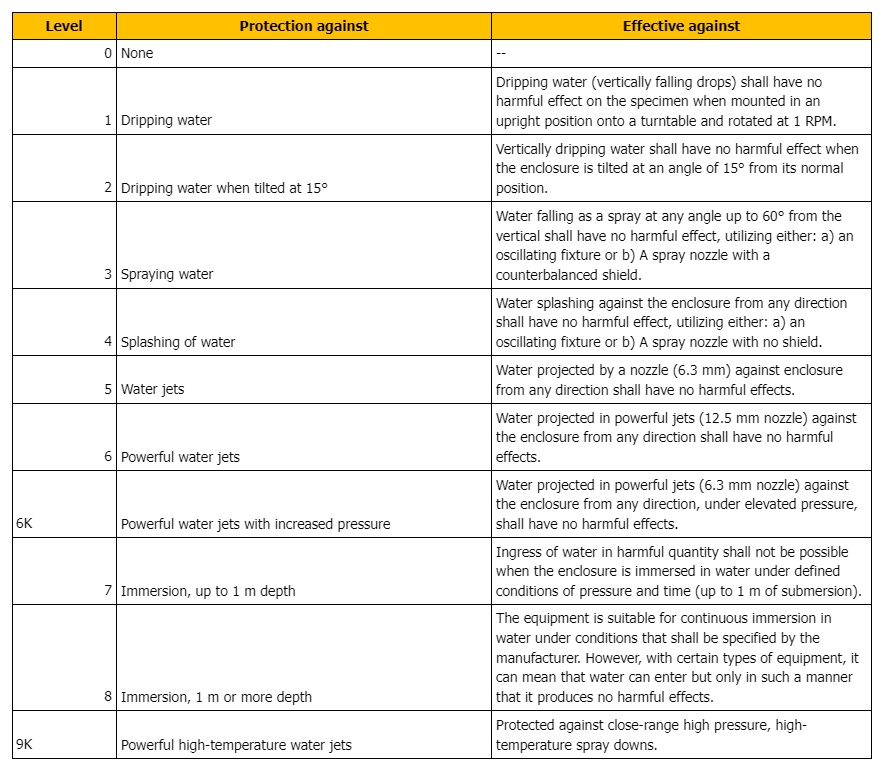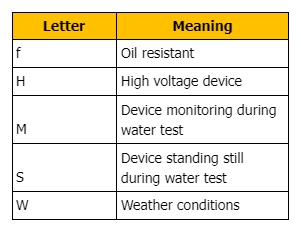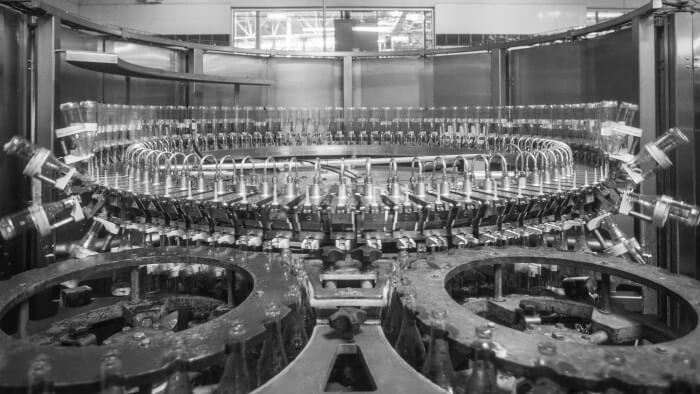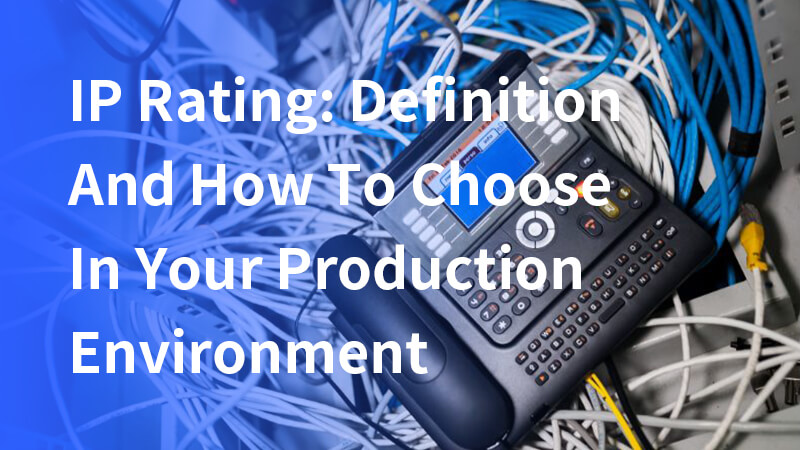The term “IP rating” refers to a system designed to clarify how well products, like electronics or outdoor gear, can withstand exposure to elements such as water and dust. The confusion starts when what I consider “water-resistant” differs vastly from your understanding.
Hence, the International Protection Marking Code, also known as the Ingress Protection (IP) rating, was established by the European Committee for Electro-Technical Standardization under IEC 60529. This system provides a standardized way to describe the level of protection a product has against the intrusion of solid objects, dust, accidental contact, and water.
This means that manufacturers across various sectors, from smartphone makers to outdoor lighting companies, can now use these IP ratings to accurately convey the durability and resistance of their products against environmental factors.
The goal is to eliminate ambiguity and ensure that when a product is labeled as “waterproof” or “dust-proof,” there is a clear, universally understood standard behind these claims.
What is an IP rating?
An IP Rating, or Ingress Protection Rating, is a standard used to define the level of effectiveness with which a device is protected against the intrusion of solid objects, such as dust and sand, as well as liquids, like water. This rating system, denoted by two numbers (and occasionally an additional letter), is critical for assessing the resilience of electronic devices and other equipment in various conditions. The first number indicates the degree of protection against solid particles, while the second number specifies the device’s resistance to water ingress. On occasion, a third character, a letter, might be appended to offer further details about the device’s protective capabilities, although this practice is not widespread.
Protection against solids
Within the structure of an IP Rating, the first numeral plays a crucial role, representing the device’s safeguarding against solid objects. This scale ranges from 0, signifying no protection, up to 6, which indicates the highest level of protection available against solid ingress.
Elaborating protection against liquids
The second numeral within an IP rating articulates the extent of protection a device offers against liquid penetration. Starting at 0, which means no protection, the scale extends to 9K, the highest standard, denoting the device’s ability to withstand high-pressure, high-temperature water jets.
Other protections
Beyond the numerical ratings, an additional letter may be employed to convey extra protective features of the device’s enclosure. This element, while optional, can provide insight into other significant protective measures but remains relatively underused in common rating descriptions.
This comprehensive approach to categorizing protection standards ensures that IP Ratings serve as an invaluable tool for consumers and professionals alike, offering a clear understanding of a product’s resilience against environmental factors.
Why does having an IP rating matter?
Securing an IP rating for a product involves undergoing a rigorous evaluation by a third-party, accredited testing facility. This process results in the assignment of a specific IP Rating that accurately represents the product’s ability to withstand the intrusion of solids like dust and debris, as well as liquids such as water.
The acquisition of a certified IP rating provides manufacturers with the credibility to assert the protective capabilities of their products confidently.
This certification not only validates the product’s quality but also assures potential customers of its reliability and durability, enabling them to make informed decisions based on their specific needs.
Furthermore, consumers who use products with a certified IP rating benefit from a clear understanding of the level of protection offered. This knowledge is essential for the proper maintenance and safe use of the equipment, significantly reducing the risk of personal injury or damage to the product.

An IP rating, therefore, plays a pivotal role in bridging the gap between manufacturers’ claims and consumers’ expectations, ensuring a higher standard of product safety and performance.
Ip rating chart
Here is a straightforward chart to assist you in selecting the most suitable IP rating for your requirements:
The first digit—protection against solid particles
The first digit in an IP Rating denotes the level of protection the enclosure offers against the entry of solid foreign objects, as well as against accidental contact with potentially dangerous components within the device, such as electrical conductors and moving parts.
This numeral specifically measures the enclosure’s capability to prevent solids of varying sizes, from large objects to fine dust particles, from penetrating and causing harm to the device’s integrity or functionality.

The second digit—guarding against water ingress
The second digit within an IP rating plays a crucial role in specifying the enclosure’s defense against the penetration of water, aiming to safeguard the device from the potential damages caused by various forms of moisture.
This number provides insight into the level of protection offered against different water exposure scenarios, ranging from light splashes to full immersion.
By understanding the significance of this digit, users can ensure that their equipment is appropriately resistant to water in environments prone to such exposure, thereby maintaining the device’s operation and longevity.

Additional letters for enhanced protection insights
Additional letters may be appended to the standard IP rating to offer deeper insights into the protective features of a device.
These supplementary characters extend beyond the basic numerical rating to include specific protective attributes against other external factors or conditions, further detailing the device’s robustness and safety measures.

What IP ratings are common for packaging machinery?
In the world of packaging machinery, IP Ratings are crucial for ensuring the safety and reliability of electrical and pneumatic enclosures like circuit boxes and cabinets.

These protective measures are vital as exposure to dust and water can lead to component malfunction, failure, or even harm to operators.
Typically, the electrical cabinets that house the necessary electronics for running a packaging machine come with IP Ratings that offer varying levels of protection against dust and water intrusion. For instance:
IP65 ensures the enclosure is dust-tight and can resist low-pressure jets of water, suitable for environments where machinery is cleaned with water sprays.
IP66 offers dust-tight protection and resistance against powerful water jets, ideal for areas with heavy washdowns.
IP67 provides dust-tight protection and safeguards against temporary immersion in water, making it fit for occasional submersion scenarios.
IP68 guarantees dust-tight protection and resistance to continuous immersion in water, suitable for operations where equipment may be submerged as part of the cleaning or usage process.
Why should you consider IP ratings in selecting packaging equipment?
When selecting packaging machinery, especially within the food industry, understanding the significance of IP ratings is crucial.
These ratings ensure that the equipment can withstand the environmental challenges it will face, whether from dust or moisture.
In dusty environments
Take, for example, the packaging of dry goods like snacks or powdered products. The process can generate a substantial amount of dust, posing a risk to the machinery’s electrical and pneumatic systems.
While dust control measures can mitigate some risks, only equipment with a solid IP rating of 5 – 6 offers adequate protection against dust penetration. In such settings, the need for waterproofing is less critical, allowing for a lower liquid IP rating.
In wet environments
Conversely, packaging food items prone to spoilage, such as dairy or meats, requires regular sanitation using water and chemical cleaners.
Here, machinery must have a high liquid IP rating of 5 – 8 to withstand intensive cleaning processes, ensuring hygiene and safety standards are met. The requirement for dust protection, in this case, is less stringent.
In environments with dust and moisture
For facilities facing both dust and moisture challenges, machinery should ideally carry a comprehensive IP rating ranging from 55 to 68.
This range signifies that the equipment is designed to be both dust-proof and waterproof, capable of handling everything from dust exposure to full water immersion during cleaning processes.
How do you choose the right IP rating for your production area?
Deciding on the appropriate IP Rating for packaging equipment enclosures requires a thorough assessment of your manufacturing setting, the characteristics of the products you’re handling, and your cleaning routines, in collaboration with the equipment manufacturer.
For the majority of conventional manufacturing settings, machines equipped with enclosures rated at IP65 or IP66 are typically adequate. These ratings ensure optimal dust resistance and good protection against water ingress. The choice between IP65 and IP66 hinges on your cleaning methods, specifically whether you use low-pressure (IP65) or high-pressure (IP66) water jets for cleaning.
It’s important to note that while the main enclosure of your packaging machine might boast an IP66 rating, other system components could offer lesser degrees of protection. For instance, printers integrated into the packaging line might not be as resilient to water ingress, necessitating additional protective measures during cleaning to prevent damage.
When determining the most suitable IP rating for your specific production environment, it’s crucial to consult with your internal experts.

Moreover, the specifications for each component of the packaging system must always be reviewed to understand the recommended cleaning procedures, thus avoiding expensive damage.
Conclusion
Understanding the importance of an IP rating is pivotal when selecting equipment for manufacturing, especially in industries where exposure to elements like dust and water is a daily concern.
An IP rating provides a clear, standardized indication of how well a device can resist these environmental factors, ensuring that manufacturers can choose equipment that meets their specific needs without compromising on safety or efficiency.
For those in the market for packaging machinery that offers reliable protection against such exposures, we recommend visiting our website for a wide range of packaging machines and labeling systems. Each product listed comes with a detailed IP rating, helping you make an informed decision to match your manufacturing environment’s unique requirements.
Our selection ensures that you find the best fit for your production line, offering durability, reliability, and the highest standards of protection as indicated by their IP ratings.
